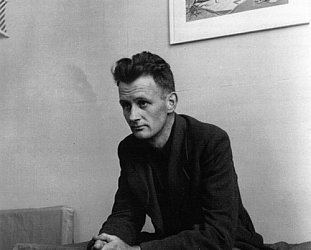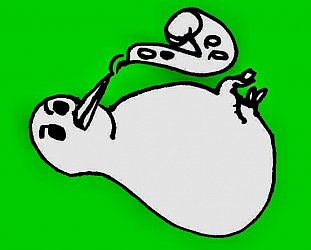Graham Reid | | 2 min read

When Richard Nixon stood on a segment of China’s famous wall in 1972 he announced, “This is a great wall and it had to be built by great people” the anti-Communist American president was playing the diplomacy game on his break-through mission. But he was wrong on a number of counts.
He had fallen for the widespread notion of a “great wall” when there are many separate walls built by dynasties down the centuries, and it was no single, united people who built these structures.
The Great Wall as it is widely known -- in China, if it was referred to at all, it was as “the long wall” until only recently -- is also, in those tourist areas near Beijing, only 500 years old. That may seem old enough, but it is not the millennia-old structure many believe, and some of it was also rebuilt in the second half of last century by Communist labour.
The myths surrounding the Great Wall are disassembled astutely in this wonderfully readable book by longtime Sinologist Lovell (subtitled China Against the World 1000BC - 2000AD) who weaves modern and ancient history together seamlessly, punctuates it with telling historical detail and anecdotes, and persuasively constructs the case for the Wall being as much to keep Chinese in as invaders out.
The various walls -- analogously like the wall being built by Israel in the West Bank she says -- were in many instances ones of aggression, population control and land grabbing more than defences against invaders from outside.
For each new dynasty a bout of wall building seem obligatory. The Qin constructed around 5000 kilometres of walls, the Han restored and built over 10,000 kilometres. Many such walls are now but small ridges in the earth, others have disappeared entirely, and even more exist in some parlous state. But what fascinating walls they are.
They are metaphors as much as brick and mortar (linguistically the Chinese ideogram for “city wall” is the same as that for “city“), repositories of important archaeological information which illuminate the lifestyles of the soldiers who garrisoned them, and they were turned into propaganda by the Communist regime to appeal to Chinese patriotism and sense of pride in their own antiquity.
“The Great Wall” became a national symbol, as shaped by popular Chinese sentiment as it was by outsiders.
Along the way Lovell debunks many of the stories about the Wall such as it being visible from the moon. Robert Ripley of Believe It or Not! fame posited that idea in 1932 and although it was confirmed by astronaut Neil Armstrong later research showed what he saw to be simply a cloud formation.
Lovell also comes up the present day and talks about the new Chinese wall: that which authorities are trying to construct around the Internet.
Incidentally, it is not only Western tourists who are in awe of the so-called Great Wall. Nixon’s words were translated by Communist journalists as, “This is a Great Wall and only a great people with a great past could have built such a great wall, and such a great people with such a great wall will surely have a great future”.
That inflated statement might act as an emblem for the myths of the various walls and their place in Chinese culture which Lovell effectively deconstructs in this fascinating book.







post a comment